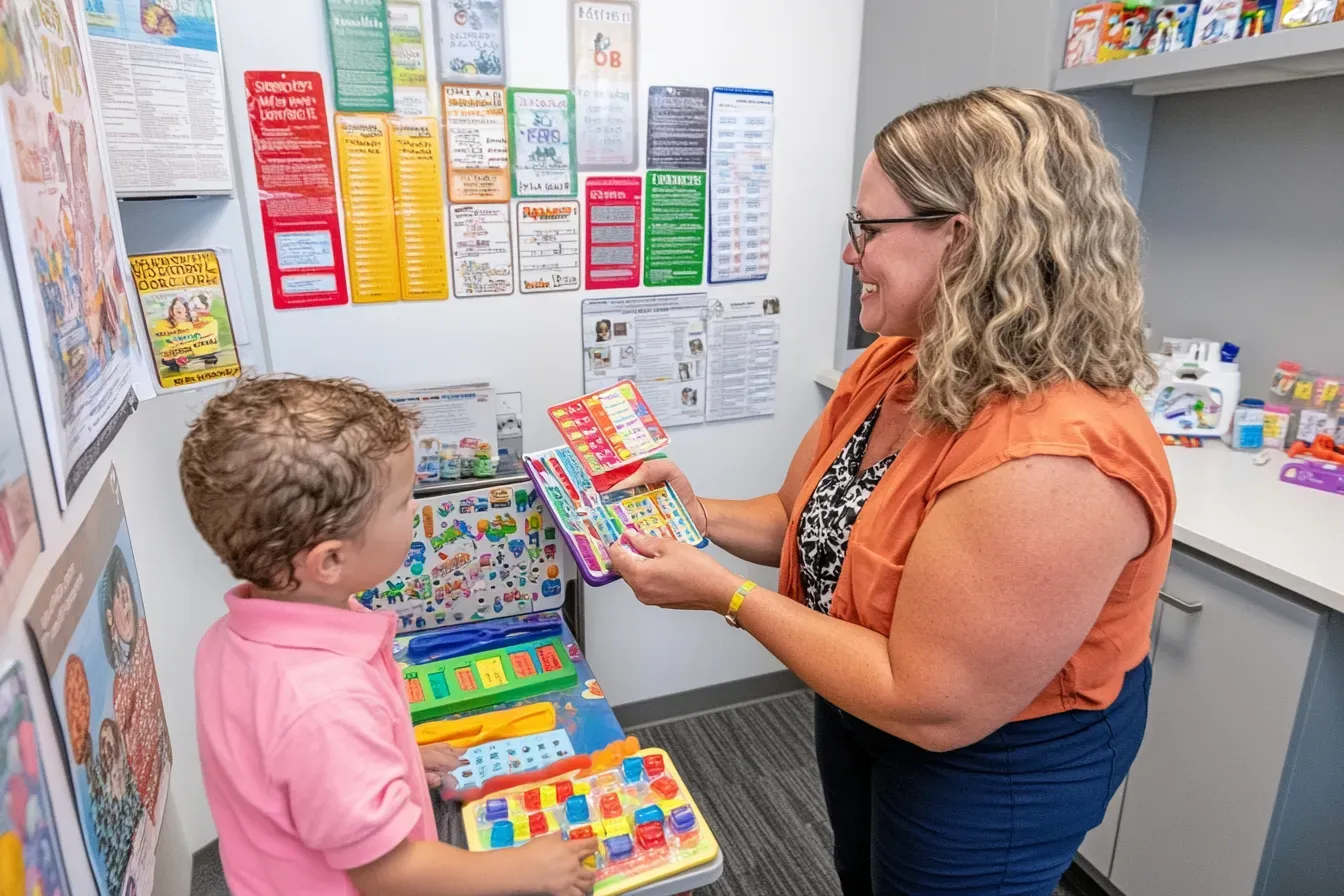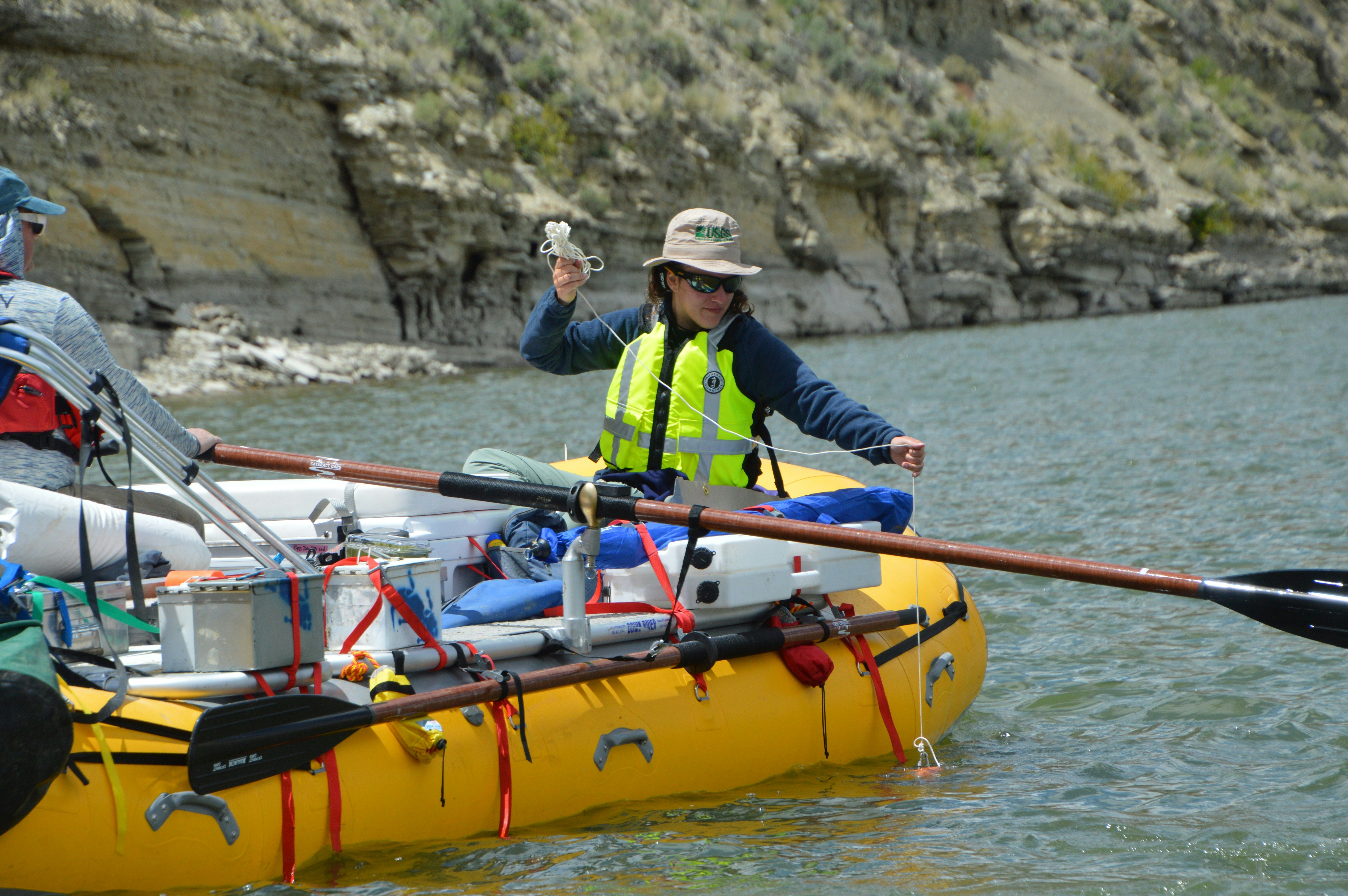Sallie Mae vs. Discover Student Loan Comparison for 2026
When it comes to financing higher education, students often find themselves overwhelmed by the many loan options available. Two of the most prominent private lenders in the market are Sallie Mae and Discover, both offering student loans with distinct features and terms. However, the challenge for many students and their families lies in understanding which lender provides the best deal for their specific needs.
In this article, we provided a side-by-side comparison of Sallie and Discover student loans. By breaking down key factors such as loan types, eligibility criteria, interest rates, fees, and more, we aim to help readers make an informed decision.
Key things you should know about Sallie Mae and Discover student loans:
- Impact of Lender Choice on Financial Future: The choice of a private lender like Sallie Mae or Discover can significantly influence loan costs, repayment flexibility, and overall financial health after graduation.
- Borrower Perks Enhance Loan Experience: Lenders like Sallie Mae and Discover provide unique perks, such as cash rewards for good grades or no-fee policies, which can add value beyond just the interest rate.
- Cosigner Influence on Loan Terms: Having a cosigner can affect eligibility and loan terms, with both lenders offering options for cosigner release after a period of timely payments.
Table of Contents
- What types of student loans do Sallie Mae and Discover offer?
- How do Sallie Mae and Discover determine loan eligibility for students?
- What are the current interest rates for Sallie Mae and Discover student loans?
- What factors affect the APR for Sallie Mae vs. Discover student loans?
- What fees are associated with Sallie Mae vs. Discover student loans?
- What are the repayment options available for Sallie Mae vs. Discover student loans?
- Are there public service loan forgiveness options with Sallie Mae or Discover?
- What perks do Sallie Mae and Discover offer to student loan borrowers?
- How Can Student Loans Assist with College Living Expenses?
- What documentation is needed for Sallie Mae vs. Discover loan applications?
- Can Private Student Loans Impact Your Enrollment Timing for Online Education?
- Will My Private Student Loan Impact My Credit Score and Future Borrowing?
- Are Sallie Mae and Discover Loans Suitable for Military Service Members?
- Can Private Student Loans Cater to the Unique Needs of Part-Time Students?
- Do Private Student Loans Adequately Cover Living Expenses?
- How Do Sallie Mae and Discover Compare to Other Private Student Loan Options?
- Can Professional Certifications Accelerate Loan Repayment and Career Progression?
- Alternatives for Students Without a Cosigner
- How Will Sallie Mae and Discover Loans Impact Future Education and Career Opportunities?
- How Can Borrowers Effectively Mitigate Long-term Risks of Private Student Loans?
- Other things you should know about Sallie Mae vs. Discover student loans
What types of student loans do Sallie Mae and Discover offer?
Sallie Mae and Discover both offer a range of student loans designed to meet various educational needs, but they differ slightly in the types of loans available.
Sallie Mae Student Loans:
- Undergraduate Student Loans: Designed for students pursuing a bachelor's or associate's degree.
- Graduate Student Loans: These are available for those attending graduate or professional school, including MBA, medical, dental, law, and other advanced degree programs.
- Career Training Loans: Tailored for students attending non-degree granting institutions, such as technical schools, trade schools, or career certification programs.
- Parent Loans: Loans for parents to help finance their child’s education, covering expenses not met by other financial aid. Sallie Mae is also considered one of the best parent loans for college in the U.S.
- K-12 Loans: For families financing private elementary or high school education.
Discover Student Loans:
- Undergraduate Student Loans: Available for students working toward a bachelor's or associate's degree.
- Graduate Student Loans: For those pursuing advanced degrees, including MBA, medical, law, and other graduate-level studies. If you are looking for some of the best law school loans, you might want to understand more about Discover loans.
- Health Professions Loans: Specialized loans for students in health-related fields, such as nursing or physical therapy.
- Law and MBA Loans: Tailored specifically for law school or MBA program expenses.
- Parent Loans: Designed to help parents cover their child’s education costs.
According to recent data, the total student loan debt reached $1.69 trillion in 2020 and went up to $1.73 trillion in 2021. Furthermore, the number increased to $1.76 trillion in 2022 and only slightly went down in 2023 to $1.75 trillion. This growing debt underscores the critical need for students to carefully evaluate their loan options and make informed choices about borrowing. The chart below shows the comparison of total student loan debt in the U.S. within the last few years:
How do Sallie Mae and Discover determine loan eligibility for students?
Sallie Mae Loan Eligibility Criteria:
- Credit History: Sallie Mae considers the applicant's credit score and history. Students with limited credit may need a creditworthy co-signer to qualify for a loan or to secure a better interest rate.
- Enrollment Status: Students must be enrolled at least half-time in an eligible institution, whether it's a degree-granting program or an approved non-degree career training program.
- Citizenship and Residency: Sallie Mae requires applicants to be U.S. citizens or permanent residents. International students can qualify if they have a U.S. citizen or permanent resident as a co-signer.
- Co-signer: Having a co-signer can improve loan approval chances and result in better loan terms, especially for those with limited credit history.
- School Certification: The school must certify the loan amount, ensuring it aligns with the cost of attendance.
Discover Loan Eligibility Criteria:
- Credit History: Discover also places a strong emphasis on credit history. A good credit score is required, and like Sallie Mae, applicants with less-established credit will likely need a creditworthy co-signer.
- Enrollment Status: Discover requires students to be enrolled at least half-time in an eligible degree-granting institution. They do not offer loans for non-degree programs, so eligibility is limited to traditional undergraduate and graduate programs.
- Citizenship and Residency: Discover requires borrowers to be U.S. citizens or permanent residents. Unlike Sallie Mae, Discover does not typically lend to international students, even with a co-signer.
- Income and Co-Signer: Discover may consider the borrower’s or co-signer’s income when determining eligibility, particularly for applicants without a strong credit history.
- School Certification: Discover also requires the school to certify the loan amount to ensure that it doesn't exceed the student's cost of attendance.
In 2023, 92.8% of all student loan debt was federal, and only 7.2% belonged to private borrowers. Despite private student loans taking up a small portion of student loan debt, they play a crucial role for many students who need additional funding beyond federal aid. Private loans often fill the gap when federal loans and grants aren’t enough to cover the full cost of education, especially for those attending more expensive institutions or pursuing advanced degrees. The chart below shows the percentage of private loan debt compared to federal student loan debt:
What are the current interest rates for Sallie Mae and Discover student loans?
Sallie Mae Student Loan Interest Rates:
Undergraduate Loans
- Fixed Rates: 5.37% - 15.49% APR
- Variable Rates: 3.69% - 15.49% APR
Graduate Loans
- Fixed Rates: 5.37% - 14.97% APR
- Variable Rates: 3.69% - 14.48% APR
Career Training Loans
- Fixed Rates: 3.69% - 115.69% APR
- Variable Rates: 5.37% - 16.46% APR
Parent Loans
- Fixed Rates: 6.50% - 12.85% APR
- Variable Rates: 5.00% - 12.85% APR
Discover Student Loan Interest Rates
Undergraduate Loans
- Fixed Rates: 5.37% - 12.99% APR
- Variable Rates: 4.24% - 11.99% APR
Graduate Loans
- Fixed Rates: 6.24% - 13.49% APR
- Variable Rates: 4.24% - 12.49% APR
Health Professions Loans
- Fixed Rates: 6.24% - 13.49% APR
- Variable Rates: 4.24% - 12.49% APR
Parent Loans
- Fixed Rates: 6.24% - 13.49% APR
- Variable Rates: 4.24% - 12.49% APR
Given that the average graduate student owed about $106,850 as of 2022, it is crucial for students and families to consider their borrowing options carefully. Understanding these annual percentage rates (APRs) is essential as they reflect the total cost of borrowing, including both interest and any associated fees. By comparing these rates and terms, students can choose a loan that best fits their financial situation and educational goals.

What factors affect the APR for Sallie Mae vs. Discover student loans?
The APR for student loans from Sallie Mae and Discover can be influenced by several factors. Here’s a breakdown of the key elements that affect the APR for both lenders:
- Credit Score: A higher credit score generally leads to a lower APR. Applicants with strong credit histories may receive more favorable rates, while those with lower credit scores might face higher rates or require a co-signer.
- Loan Type and Term: Different loan types (undergraduate, graduate, career training) and repayment terms can influence the APR. For example, graduate loans might have different rates compared to undergraduate loans, and longer-term loans might come with higher APRs.
- Fixed vs. Variable Rates: Fixed APRs remain constant throughout the loan term, providing stability but often at a higher initial rate compared to variable APRs. Variable APRs can start lower but may fluctuate based on market conditions.
- Loan Amount and Repayment Plan: The amount borrowed and the chosen repayment plan can impact the APR. Larger loan amounts or different repayment options might influence the overall rate offered.
- Co-signer: Having a creditworthy co-signer can significantly affect the APR. A co-signer with a strong credit history can help secure a lower APR for the borrower.
- Market Conditions: Variable APRs are influenced by prevailing market interest rates. Market interest rates are influenced by economic factors, including inflation, economic growth, and monetary policy set by central banks. Changes in the financial markets can lead to fluctuations in variable rates over time.
What fees are associated with Sallie Mae vs. Discover student loans?
Here is a comparison of the fees typically associated with student loans from both lenders:
- Origination fees: Sallie Mae generally does not charge an origination fee on its student loans, including loans for medical school. This means there is no upfront cost to process or disburse the loan. Similarly, Discover does not charge an origination fee on its student loans. Borrowers do not incur any upfront fees for processing or disbursing the loan.
- Late Fees: If a payment is late, Sallie Mae may charge a late fee. This fee is typically a percentage of the overdue payment or a fixed amount, depending on the loan agreement. Discover may also charge a late fee if a payment is not made by the due date. This fee is typically a percentage of the overdue amount or a fixed amount specified in the loan agreement.
- Returned Payment Fees: If a payment is returned due to insufficient funds or other issues, Sallie Mae may impose a returned payment fee. This fee is usually a fixed amount. The same goes for Discover student loans.
- Prepayment Penalties: Both Sallie Mae and Discover do not charge prepayment penalties. Borrowers can make extra payments or pay off their loans early without incurring additional costs.
What are the repayment options available for Sallie Mae vs. Discover student loans?
Here is a comparison of the repayment options provided by both lenders:
Sallie Mae Repayment Options:
- Deferred Repayment: You don’t make any payments while in school and during your grace period (usually six months after graduation). Interest accrues during this time, which will be added to your principal balance when repayment begins.
- Fixed Repayment: You make small fixed payments (e.g., $25 per month) while in school and during the grace period. This option reduces the amount of interest that accrues during school and can help lower your overall loan cost.
- Interest-Only Repayment: You pay only the interest that accrues while you’re in school and during the grace period. This prevents your loan balance from increasing and reduces the total cost of your loan over time.
- Principal and Interest Repayment: Start making full principal and interest payments immediately after the loan is disbursed. This option ensures that you pay off your loan more quickly, but it requires the ability to manage higher payments while in school.
According to statistics, only about 20% of adults in the U.S. have reported having paid off their student debts. When choosing a student loan, understanding the repayment options available is crucial for managing your debt effectively after graduation. Sallie Mae and Discover offer a variety of repayment plans to suit different financial situations. That is why it is important to learn about student loan basics before making a decision.

Are there public service loan forgiveness options with Sallie Mae or Discover?
Public Service Loan Forgiveness (PSLF) is a federal program that forgives the remaining balance on Direct Loans after the borrower has made 120 qualifying monthly payments while working full-time for a qualifying employer, such as government organizations or non-profits. However, not all loans are eligible for PSLF, particularly private student loans. Sallie Mae and Discover private student loans are not eligible for Public Service Loan Forgiveness.
Borrowers interested in PSLF should focus on managing their federal loans while considering other financial management strategies for their private loans. While both Sallie Mae and Discover private loans are ineligible for PSLF, borrowers might explore other repayment assistance options, such as deferment or forbearance, during periods of financial hardship.
What perks do Sallie Mae and Discover offer to student loan borrowers?
Sallie Mae and Discover offer several perks to student loan borrowers that go beyond basic loan features. These perks can make the borrowing and repayment process more manageable and rewarding. Before you get into the steps to apply for student loans, here is a comparison of the perks offered by each lender:
Sallie Mae Student Loan Perks
- Graduated Repayment Period: Sallie Mae offers a Graduated Repayment Period, allowing borrowers to make interest-only payments for 12 months after their grace period. This option helps ease the transition into full repayment, making it easier for graduates to manage their finances early in their careers. This can reduce the financial burden right after graduation when income might be lower.
- Free FICO® Credit Score: Sallie Mae provides free access to your quarterly FICO® Credit Score, allowing you to track your credit health over time. Regular access to your credit score helps you monitor and manage your credit, which is important for future financial planning and borrowing.
- Cosigner Release: This option releases a cosigner from the loan after you’ve made 12 consecutive on-time principal and interest payments and met other credit requirements. This can relieve your cosigner of their obligation, making it a valuable perk for both the borrower and the cosigner.
- Multiple Repayment Options: Sallie Mae provides a variety of repayment options, including deferred, fixed, and interest-only repayment plans, giving you flexibility in how you manage your loan payments. These options allow you to tailor your repayment plan based on your financial situation during and after school.
Discover Student Loan Perks
- 1% Cash Reward for Good Grades: Discover offers a 1% cash reward on each new student loan if the student earns a GPA of 3.0 or higher during a given academic period.
- Cash Back Rewards for Graduation: They provide a 2% cash back reward on the loan amount upon graduation. This perk provides a financial bonus upon completing your degree, which can be used towards loan repayment or other post-graduation expenses.
- Flexible Repayment Options: Discover offers flexible repayment options, including deferred, fixed, and interest-only repayment plans. These options allow borrowers to choose a repayment plan that fits their financial situation during and after school.
- Cosigner Release: Similar to Sallie Mae, Discover allows for cosigner release after 24 consecutive on-time payments and meeting certain credit criteria.
Navigating the complexities of private student loans is essential in minimizing financial strain both during and after your education. Given that the national private student loan debt balance is $128.8 billion, selecting the right lender can significantly impact your financial future. With the weight of such a substantial debt burden, understanding the nuances of what each lender offers—whether it's repayment flexibility, interest rates, or borrower perks—can help you make an informed decision that aligns with your long-term financial health.

How Can Student Loans Assist with College Living Expenses?
Understanding how loans can support everyday college expenses is essential for a well-rounded financial plan. Some lenders allow portions of the borrowed amount to be dedicated to housing, transportation, and other necessary living costs, beyond tuition and fees. Borrowers should closely review lender policies to determine permissible expense allocations and ensure these funds are managed within their overall budget. For additional insights on budgeting and allocating funds, consult student loans for living expenses.
What documentation is needed for Sallie Mae vs. Discover loan applications?
While both lenders require proof of income, this becomes more crucial if applying without a cosigner. Both Sallie Mae and Discover may place more emphasis on the cosigner’s financial details if one is used. To complete this private student loan guide, here are the documents you will need to apply for a student loan:
- Personal Information: This includes your social security number (SSN) and date of birth to verify your identity, confirm age eligibility, and credit checks. You should also bring an I.D. to confirm your identity and residency.
- School Certification: Both lenders typically require school certification to confirm enrollment and the cost of attendance, which is used to determine the loan amount.
- Financial Information: You will also need to submit an income verification, existing debt information, and financial aid information. This includes your recent pay stubs, tax returns, details on grants or scholarships, and credit card balances.
- Cosigner Documentation: If a cosigner is involved, their personal and financial information will be needed. Discover might be slightly more stringent on cosigner creditworthiness compared to Sallie Mae.
Can Private Student Loans Impact Your Enrollment Timing for Online Education?
Private student loans typically follow structured disbursement schedules aligned with academic calendars, which may affect when funds become available for tuition and related expenses. Borrowers should verify that the loan processing and disbursement dates correspond with their chosen program's start date to ensure smooth financial planning. This is particularly important for students considering flexible enrollment options in online programs, as institutions may operate on rolling admissions. Prospective students should assess the interaction between their loan timelines and the school's enrollment process to avoid delays and financial mismatches. For further clarity on enrollment flexibility, please review Can you start online school anytime?.
Will My Private Student Loan Impact My Credit Score and Future Borrowing?
Both Sallie Mae and Discover report loan activity to major credit bureaus, meaning that timely payments can contribute positively to your credit history while any delinquencies may negatively affect your score. Understanding and managing the repayment trajectory is essential, as favorable credit behavior can lead to better refinancing options and lower interest rates on future loans. Monitoring your credit and maintaining consistent payment records will provide a stronger financial profile when negotiating subsequent financing or exploring new educational opportunities. For those considering alternative paths that may ease long-term financial commitments, researching simple degree courses can offer additional context on managing education costs.
Are Sallie Mae and Discover Loans Suitable for Military Service Members?
Military service members face unique financial circumstances that necessitate additional scrutiny when selecting a private student loan. Evaluating tailored eligibility requirements, repayment flexibility that accommodates active duty obligations, and specialized support services is essential for informed decision-making. Applicants should verify whether lender offerings align with benefits provided through military education programs—for example, enrolling in an online college for active duty military may provide access to programs with enhanced alignment between academic schedules and military commitments.
Can Private Student Loans Cater to the Unique Needs of Part-Time Students?
Part-time students often require funding structures that align with irregular enrollment and reduced academic loads. Private lenders may offer tailored loan options that adjust disbursement schedules and repayment plans to better meet the financial needs of students balancing work and studies. Evaluating eligibility criteria, repayment flexibility, and funding allocation strategies is essential for borrowers who pursue non-traditional study formats. For further details on specialized funding alternatives, review the part-time student loan options available.
Do Private Student Loans Adequately Cover Living Expenses?
When evaluating private student loan options, it is essential to assess whether the disbursement structure allows for a balanced allocation between tuition payments and everyday living costs. Borrowers must examine lender policies on fund distribution to ensure that their financial plan accommodates necessary housing, transportation, and sustenance expenses without jeopardizing academic priorities.
A thorough review of repayment terms and budget management strategies can help optimize the use of loan funds. Prospective applicants should also consider the long-term implications of using borrowed funds for living expenses, as these decisions may influence overall debt management and financial stability after graduation. For further clarification on this aspect, review insights on our article Do student loans cover living expenses?
Critical evaluation of fund allocation can serve as a decisive factor in selecting a loan that supports both educational and day-to-day financial requirements effectively.
How Do Sallie Mae and Discover Compare to Other Private Student Loan Options?
When choosing between Sallie Mae and Discover, it’s also important to consider how these lenders stack up against other private loan providers. Exploring additional options allows you to find the best rates, terms, and perks that align with your financial needs.
Competitive Interest Rates
Both Sallie Mae and Discover offer competitive interest rates, but other lenders may provide better rates depending on your credit score and financial situation. For example:
- SoFi: Offers competitive rates for those with strong credit and exclusive perks like career coaching and unemployment protection.
- College Ave: Known for flexible repayment terms and straightforward application processes.
Unique Perks
While Sallie Mae and Discover provide notable benefits—like Discover’s cash rewards for good grades and Sallie Mae’s cosigner release—other lenders also offer unique advantages:
- Earnest: Allows borrowers to customize their repayment terms and skip one payment per year without penalty.
- Citizens Bank: Provides multi-year approval, reducing the need for repeated credit checks during your education.
Cosigner Flexibility
Both Sallie Mae and Discover require cosigners for students with limited credit histories, but cosigner release terms vary across lenders. Some lenders, like SoFi, offer loans without requiring a cosigner if the borrower meets credit requirements.
Comparing Alternatives
For a more detailed breakdown of alternative lenders, check out our guide on the best private student loan. This resource explores top providers, helping you find the right fit for your needs.
Can Professional Certifications Accelerate Loan Repayment and Career Progression?
Leveraging additional credentials can enhance employment prospects and improve financial stability after graduation. Earning targeted certifications may lead to higher income opportunities, making it easier to manage and repay private student loans. For instance, incorporating certifications for high paying jobs into your career plan can increase your competitiveness in the job market while providing a strategic edge in long-term debt management.
Alternatives for Students Without a Cosigner
Finding a student loan without a cosigner can be challenging, especially for students with limited credit history or insufficient income. While both Sallie Mae and Discover are excellent private loan providers, they generally require a cosigner for most students to qualify. However, there are other private loan options available that cater specifically to those who cannot provide a cosigner.
For students who need small student loans without cosigner, several lenders offer flexible options. These loans typically consider factors beyond credit history, such as future earning potential or academic performance, making them accessible to a wider range of students. Exploring such alternatives can help bridge financial gaps, particularly for those seeking affordable borrowing solutions without depending on a cosigner.
Ultimately, comparing cosigner-free loan options alongside Sallie Mae and Discover can broaden the range of possibilities and support more tailored education financing strategies.
What students have to say about their Sallie Mae and Discover loans
"Choosing Discover for my student loans was one of the best decisions I made during college. The application process was straightforward, and the interest rate was competitive, but what really stood out was their exceptional customer service—they were always just a call away. I felt supported every step of the way." — Ryan
"Sallie Mae offered me the flexibility I needed to finance my degree, with repayment options that fit my budget after graduation. I appreciated their variety of loan options, especially since I pursued a part-time program while working. Thanks to their support, I managed to graduate debt-savvy and confident." — Sharmaine
"Discover’s student loans not only covered my tuition but also rewarded me for maintaining good grades, which motivated me to stay focused throughout my studies. The process was hassle-free, and I loved knowing that I was in control of my payments, with no hidden fees. It was the peace of mind I needed." — Niko
How Will Sallie Mae and Discover Loans Impact Future Education and Career Opportunities?
Evaluating the long-term influence of your student loan on further education and career advancement is crucial. Borrowers should consider how favorable repayment plans and credit-building potential can open doors to additional academic or professional development opportunities. For instance, if planning to pursue advanced studies such as 1-year master's programs online, it is important to assess how current loan terms and overall debt load could affect future financing options, including refinancing or accessing supplementary loans. This perspective encourages a holistic financial strategy that aligns immediate educational needs with long-term career growth and continued learning.
How Can Borrowers Effectively Mitigate Long-term Risks of Private Student Loans?
To safeguard against default and other financial challenges, borrowers should employ robust budgeting and risk management strategies tailored to long-term financial stability. This involves careful planning of both tuition and living expenses, proactive credit monitoring, and consideration of protective measures such as loan refinancing or insurance options where available. Additionally, evaluating alternative education financing avenues can reduce overall reliance on high-interest loans. For instance, choosing institutions that offer competitive tuition rates, such as cheap online universities, may lower debt burdens while still providing quality education.
Key Findings
- The national private student loan debt balance is $128.8 billion.
- An average graduate student in the U.S. owed about $106,850 as of 2022.
- Private loans are often used to bridge the financial gap left by federal loans, especially for those attending high-cost institutions or pursuing advanced degrees.
- Only about 20% of adults in the U.S. have reported to having their student debt paid of.
- Sallie Mae and Discover offer both fixed and variable interest rates, with Discover typically providing more straightforward repayment options and fewer fees.
- The total student loan debt from federal and private student loan debt has reached $1.75 trillion as of 2023.
Other things you should know about Sallie Mae vs. Discover student loans
Can international students apply for Sallie Mae or Discover student loans?
Yes, international students can apply for Sallie Mae and Discover student loans, but there are specific requirements. Both lenders typically require international students to have a U.S. citizen or permanent resident as a cosigner. The cosigner’s credit history and financial stability play a crucial role in the approval process since international students may not have established credit in the U.S. Without a qualified cosigner, it is generally challenging for international students to secure private student loans from these lenders.
Are there late payment fees for Sallie Mae or Discover loans?
No, there are no late payment fees for Sallie Mae or Discover student loans. Both lenders have eliminated fees for late payments, as well as other common fees like application and origination fees. This makes their loan products more predictable and potentially less costly if you encounter difficulty making payments on time. However, it is still important to avoid late payments as they can impact your credit score.
What happens to Sallie Mae or Discover loans if the borrower dies or becomes disabled?
If the borrower dies or becomes permanently disabled, both Sallie Mae and Discover will forgive the remaining balance on the student loan. This means that the borrower or their family will not be responsible for repaying the debt in such circumstances. For cosigned loans, this forgiveness also applies, releasing the cosigner from any further obligation to the loan.
Resources:
- Education Data Initiative. (2024). Student Loan Debt Statistics. https://educationdata.org/student-loan-debt-statistics
- Federal Reserve Bank of New York. (2024). Center for Microeconomic Data. https://www.newyorkfed.org/microeconomics/topics/student-debt

































